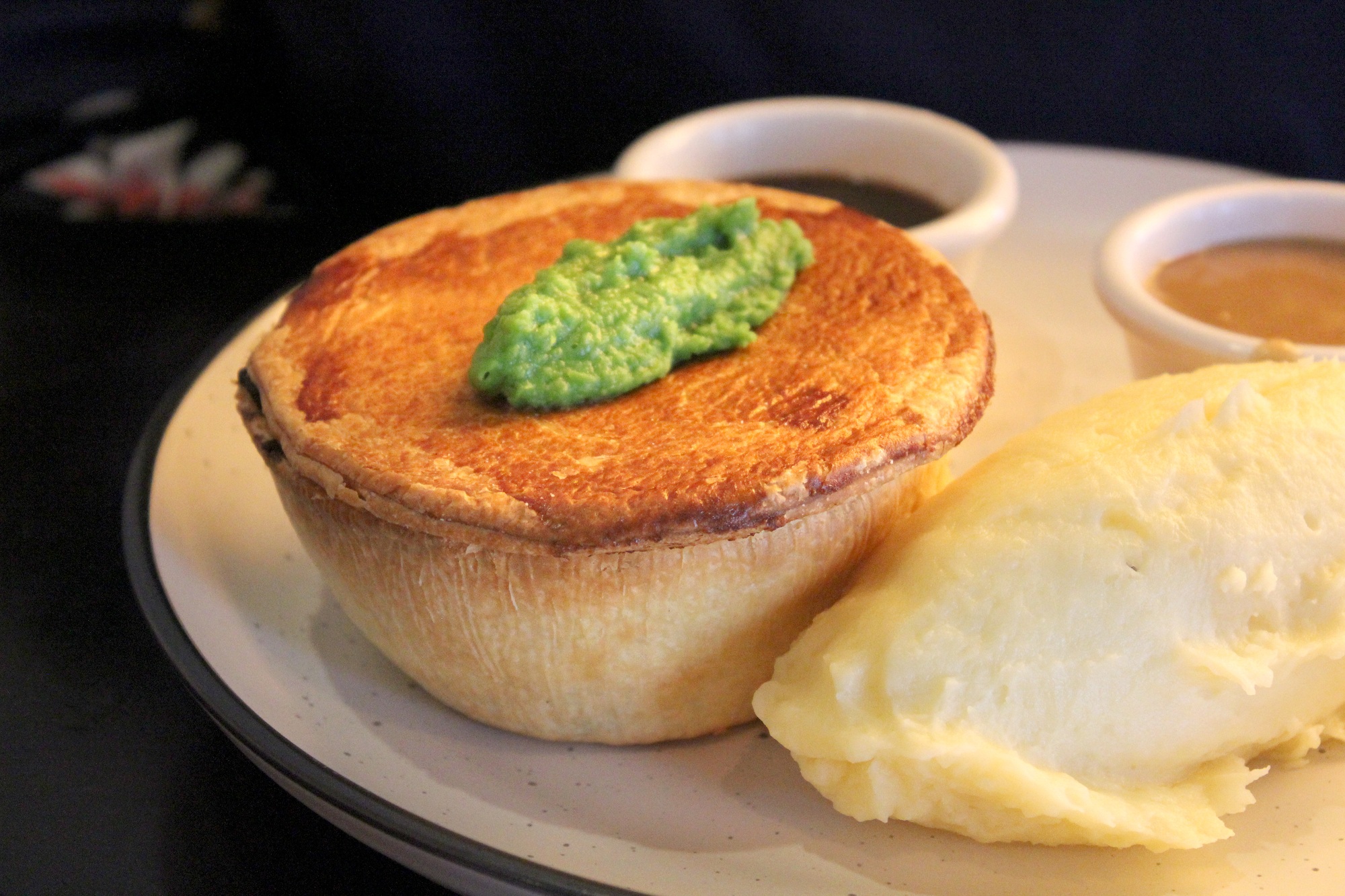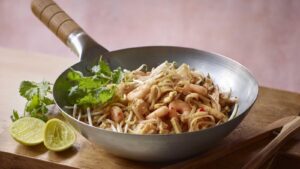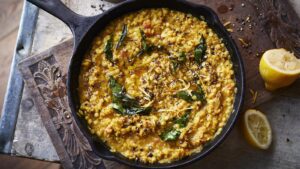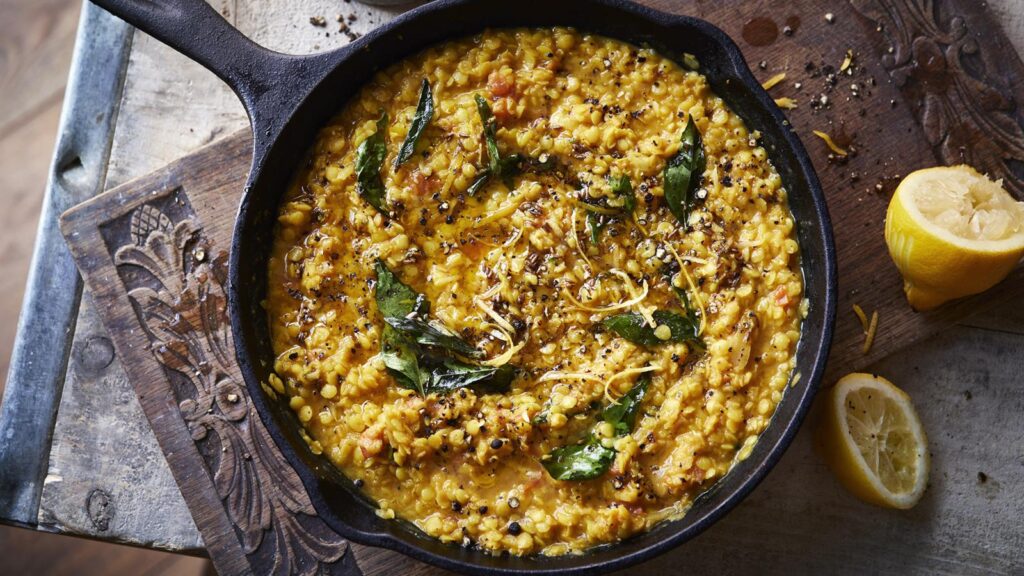The History and Recipe of Pie and Mash: A London Legacy
Introduction
Pie and mash is more than just a meal; it is a cultural institution, deeply embedded in the working-class history of London, particularly the East End. This dish, consisting of a minced meat pie, creamy mashed potatoes, and a parsley-infused liquor, has sustained generations of Londoners through economic hardship, war, and social change. Its simplicity belies a rich history that reflects the city’s industrial growth, migration patterns, and culinary ingenuity. This exploration delves into the origins of pie and mash, its rise as a staple of Cockney cuisine, its adaptations over time, and its place in modern Britain, culminating in an authentic recipe for home cooks.
Origins of Pie and Mash
The story of pie and mash begins in the 18th and 19th centuries, during Britain’s Industrial Revolution. London, as the heart of the empire, was a burgeoning metropolis, drawing workers from rural areas and immigrants seeking opportunity. The East End, with its docks, factories, and markets, became a melting pot of cultures and cuisines, but also a place of poverty. Food needed to be cheap, filling, and quick to prepare or purchase, and pie and mash emerged as a perfect solution.
Pies: A Historical Staple
Pies have been a cornerstone of British cuisine since medieval times. The earliest pies, known as “coffyns,” were sturdy pastry cases filled with meats, vegetables, or fruits, designed to preserve food or make it portable. By the 18th century, pies were a common street food in London, sold by itinerant vendors called “piemen.” These pies were often filled with whatever was affordable—beef, mutton, or offal—and were a cheap meal for laborers. The pie’s portability made it ideal for dockworkers, factory hands, and market traders who needed sustenance on the go.
Pies have been a cornerstone of British cuisine since medieval times. The earliest pies, known as “coffyns,” were sturdy pastry cases filled with meats, vegetables, or fruits, designed to preserve food or make it portable. By the 18th century, pies were a common street food in London, sold by itinerant vendors called “piemen.” These pies were often filled with whatever was affordable—beef, mutton, or offal—and were a cheap meal for laborers. The pie’s portability made it ideal for dockworkers, factory hands, and market traders who needed sustenance on the go.
Mash: The Humble Potato
The inclusion of mashed potatoes in the dish reflects the potato’s rise in Britain. Introduced from the Americas in the 16th century, potatoes were initially met with suspicion but became a staple by the 18th century, especially among the poor. They were cheap, versatile, and filling, making them a natural companion to the pie. Mashed potatoes, enriched with butter or dripping, provided a creamy, comforting base that complemented the savory pie.
The inclusion of mashed potatoes in the dish reflects the potato’s rise in Britain. Introduced from the Americas in the 16th century, potatoes were initially met with suspicion but became a staple by the 18th century, especially among the poor. They were cheap, versatile, and filling, making them a natural companion to the pie. Mashed potatoes, enriched with butter or dripping, provided a creamy, comforting base that complemented the savory pie.
Liquor: The Parsley Sauce
The liquor—a thin, green sauce made with parsley and a starchy base—is perhaps the most distinctive element of pie and mash. Its origins are tied to London’s eel trade. In the 18th and 19th centuries, eels were abundant in the Thames and its estuaries, making them a cheap protein source for the working class. Eel pies were common, and the liquor likely evolved from the broth used to stew eels, thickened with flour and flavored with parsley for freshness. As beef replaced eel in many pies, the liquor remained, becoming a defining feature of the dish.
The liquor—a thin, green sauce made with parsley and a starchy base—is perhaps the most distinctive element of pie and mash. Its origins are tied to London’s eel trade. In the 18th and 19th centuries, eels were abundant in the Thames and its estuaries, making them a cheap protein source for the working class. Eel pies were common, and the liquor likely evolved from the broth used to stew eels, thickened with flour and flavored with parsley for freshness. As beef replaced eel in many pies, the liquor remained, becoming a defining feature of the dish.
The Role of Eels
Eels played a significant role in shaping pie and mash culture. The Thames and its tributaries were teeming with eels, and London’s markets, such as Billingsgate, were hubs for eel trading. Eel stalls and pie shops proliferated in the East End, particularly in areas like Whitechapel and Stepney. These establishments often served eel pies, jellied eels, or stewed eels alongside mashed potatoes. Over time, as eel supplies dwindled and beef became more affordable, minced beef pies took precedence, but the liquor retained its eel-inspired parsley flavor.
Eels played a significant role in shaping pie and mash culture. The Thames and its tributaries were teeming with eels, and London’s markets, such as Billingsgate, were hubs for eel trading. Eel stalls and pie shops proliferated in the East End, particularly in areas like Whitechapel and Stepney. These establishments often served eel pies, jellied eels, or stewed eels alongside mashed potatoes. Over time, as eel supplies dwindled and beef became more affordable, minced beef pies took precedence, but the liquor retained its eel-inspired parsley flavor.
The Rise of Pie and Mash Shops
By the mid-19th century, pie and mash shops began to appear across London, particularly in the East End. These shops were more than eateries; they were social hubs where workers gathered to eat, gossip, and escape the grind of daily life. The earliest recorded pie and mash shop, Henry Blanchard’s in Southwark, opened in 1844, but it was the 1880s and 1890s that saw a boom in these establishments.
The Pioneers
Several families became synonymous with pie and mash, turning small shops into enduring legacies. The Manze family, Italian immigrants who arrived in London in the 1870s, opened their first shop in 1891. Their success lay in standardizing the dish: a minced beef pie, mashed potatoes, and liquor, served quickly and affordably. Other notable names include Cooke’s, established in 1862, and Goddard’s, which traces its roots to 1890. These shops were often family-run, with recipes and techniques passed down through generations.
Several families became synonymous with pie and mash, turning small shops into enduring legacies. The Manze family, Italian immigrants who arrived in London in the 1870s, opened their first shop in 1891. Their success lay in standardizing the dish: a minced beef pie, mashed potatoes, and liquor, served quickly and affordably. Other notable names include Cooke’s, established in 1862, and Goddard’s, which traces its roots to 1890. These shops were often family-run, with recipes and techniques passed down through generations.
The Shop Experience
Pie and mash shops were designed for efficiency. Customers sat at communal tables, often made of marble, and ate with a spoon and fork—no knives, as the pie’s pastry was soft and the filling tender. The shops were tiled for easy cleaning, reflecting the practical needs of serving hundreds daily. Prices were kept low, making pie and mash accessible to even the poorest workers. A typical meal in the 1890s might cost a penny or two, equivalent to a few pounds today.
Pie and mash shops were designed for efficiency. Customers sat at communal tables, often made of marble, and ate with a spoon and fork—no knives, as the pie’s pastry was soft and the filling tender. The shops were tiled for easy cleaning, reflecting the practical needs of serving hundreds daily. Prices were kept low, making pie and mash accessible to even the poorest workers. A typical meal in the 1890s might cost a penny or two, equivalent to a few pounds today.
Cultural Significance
Pie and mash shops became emblematic of Cockney identity. The East End, with its tight-knit communities, fostered a sense of pride in local traditions, and pie and mash was a dish that belonged to the people. It was celebrated in music hall songs, literature, and later, film and television, cementing its place in London’s cultural fabric. The shops also provided a rare space for social mixing, where dockworkers, market traders, and even the occasional toff might share a table.
Pie and mash shops became emblematic of Cockney identity. The East End, with its tight-knit communities, fostered a sense of pride in local traditions, and pie and mash was a dish that belonged to the people. It was celebrated in music hall songs, literature, and later, film and television, cementing its place in London’s cultural fabric. The shops also provided a rare space for social mixing, where dockworkers, market traders, and even the occasional toff might share a table.
Evolution Through the 20th Century
The 20th century brought challenges and changes to pie and mash, but its popularity endured. World wars, economic shifts, and cultural changes tested the dish’s resilience, while modernization and migration introduced new influences.
World Wars and Rationing
During World War I and II, food shortages and rationing threatened pie and mash shops. Meat was scarce, and many shops relied on offal or vegetables to fill pies. Potatoes, however, remained a reliable staple, and liquor could be made with minimal ingredients. The shops’ affordability made them vital during these lean years, offering comfort to communities battered by war. Some shops, like Manze’s in Tower Bridge, became air-raid shelters, reinforcing their role as community anchors.
During World War I and II, food shortages and rationing threatened pie and mash shops. Meat was scarce, and many shops relied on offal or vegetables to fill pies. Potatoes, however, remained a reliable staple, and liquor could be made with minimal ingredients. The shops’ affordability made them vital during these lean years, offering comfort to communities battered by war. Some shops, like Manze’s in Tower Bridge, became air-raid shelters, reinforcing their role as community anchors.
Post-War Prosperity
The post-war boom of the 1950s and 1960s brought prosperity, but also competition. Fast food chains, such as fish and chip shops and later American-style burger joints, vied for customers. Pie and mash shops adapted by emphasizing tradition, with families like the Goddards and Cookes expanding their businesses. The dish’s affordability and nostalgic appeal kept it relevant, even as tastes diversified.
The post-war boom of the 1950s and 1960s brought prosperity, but also competition. Fast food chains, such as fish and chip shops and later American-style burger joints, vied for customers. Pie and mash shops adapted by emphasizing tradition, with families like the Goddards and Cookes expanding their businesses. The dish’s affordability and nostalgic appeal kept it relevant, even as tastes diversified.
Decline of the East End
The East End itself changed dramatically in the 20th century. The decline of the docks, urban redevelopment, and gentrification displaced many working-class communities. Pie and mash shops, once numbering in the hundreds, began to close. By the 1980s, only a few dozen remained, concentrated in areas like Bethnal Green and Deptford. Yet, the dish’s cultural resonance ensured its survival, with shops like F. Cooke’s in Broadway Market maintaining loyal followings.
The East End itself changed dramatically in the 20th century. The decline of the docks, urban redevelopment, and gentrification displaced many working-class communities. Pie and mash shops, once numbering in the hundreds, began to close. By the 1980s, only a few dozen remained, concentrated in areas like Bethnal Green and Deptford. Yet, the dish’s cultural resonance ensured its survival, with shops like F. Cooke’s in Broadway Market maintaining loyal followings.
Immigrant Influences
London’s growing diversity also left its mark. Immigrants from the Caribbean, South Asia, and elsewhere brought new flavors to the East End, but pie and mash remained a constant. Some shops experimented with vegetarian pies or spicier fillings, though traditionalists resisted change. The dish’s simplicity made it a neutral ground, enjoyed by Londoners of all backgrounds.
London’s growing diversity also left its mark. Immigrants from the Caribbean, South Asia, and elsewhere brought new flavors to the East End, but pie and mash remained a constant. Some shops experimented with vegetarian pies or spicier fillings, though traditionalists resisted change. The dish’s simplicity made it a neutral ground, enjoyed by Londoners of all backgrounds.
Pie and Mash Today
In 2025, pie and mash is both a nostalgic relic and a living tradition. While the number of traditional shops has dwindled—estimates suggest fewer than 30 remain in London—the dish has found new life in various forms.
Traditional Shops
Historic shops like M. Manze in Peckham and Goddard’s in Greenwich continue to thrive, drawing locals and tourists alike. These shops preserve the classic recipe: minced beef pie, creamy mash, and parsley liquor, often served with jellied or stewed eels on the side. The communal dining experience, with its tiled walls and no-nonsense service, remains unchanged, offering a glimpse into London’s past.
Historic shops like M. Manze in Peckham and Goddard’s in Greenwich continue to thrive, drawing locals and tourists alike. These shops preserve the classic recipe: minced beef pie, creamy mash, and parsley liquor, often served with jellied or stewed eels on the side. The communal dining experience, with its tiled walls and no-nonsense service, remains unchanged, offering a glimpse into London’s past.
Modern Adaptations
Pie and mash has also adapted to contemporary tastes. Pubs and restaurants across Britain now serve upscale versions, with gourmet fillings like venison or chicken and leek. Vegetarian and vegan pies, paired with dairy-free mash and liquor, cater to modern diets. Food trucks and pop-up stalls have brought pie and mash to festivals and markets, while supermarkets sell pre-packaged versions, though purists argue these lack the authenticity of shop-bought meals.
Pie and mash has also adapted to contemporary tastes. Pubs and restaurants across Britain now serve upscale versions, with gourmet fillings like venison or chicken and leek. Vegetarian and vegan pies, paired with dairy-free mash and liquor, cater to modern diets. Food trucks and pop-up stalls have brought pie and mash to festivals and markets, while supermarkets sell pre-packaged versions, though purists argue these lack the authenticity of shop-bought meals.
Cultural Revival
The dish’s cultural significance has spurred efforts to preserve it. In 2017, Manze’s Tower Bridge shop was granted Grade II listed status, recognizing its historical importance. Social media platforms like X have amplified pie and mash’s visibility, with fans sharing photos and debating the best shops. Documentaries and food shows, such as those on BBC and Channel 4, have explored its history, introducing it to new audiences.
The dish’s cultural significance has spurred efforts to preserve it. In 2017, Manze’s Tower Bridge shop was granted Grade II listed status, recognizing its historical importance. Social media platforms like X have amplified pie and mash’s visibility, with fans sharing photos and debating the best shops. Documentaries and food shows, such as those on BBC and Channel 4, have explored its history, introducing it to new audiences.
Global Reach
Pie and mash has even crossed borders. Expat communities in Australia, Canada, and the United States have opened pie shops, often pairing the dish with local ingredients. In London, tourists from Europe, Asia, and beyond visit pie and mash shops as part of the city’s culinary heritage, alongside fish and chips or afternoon tea.
Pie and mash has even crossed borders. Expat communities in Australia, Canada, and the United States have opened pie shops, often pairing the dish with local ingredients. In London, tourists from Europe, Asia, and beyond visit pie and mash shops as part of the city’s culinary heritage, alongside fish and chips or afternoon tea.
The Recipe: Authentic Pie and Mash
To understand pie and mash fully, one must experience it in the kitchen. Below is an authentic recipe for a traditional minced beef pie, mashed potatoes, and parsley liquor, scaled for a home cook serving 4-6 people. This recipe draws on techniques from historic shops like Manze’s and Cooke’s, adapted for modern kitchens.
Ingredients
For the Pie Filling:
- 500g minced beef (15-20% fat for flavor)
- 1 medium onion, finely chopped
- 1 tbsp vegetable oil
- 1 tsp Worcestershire sauce
- 1 tbsp plain flour
- 200ml beef stock
- Salt and black pepper to taste
For the Pastry:
- 400g plain flour
- 200g suet (or butter for a lighter crust)
- 100ml cold water
- 1 tsp salt
- 1 egg, beaten (for egg wash)
For the Mashed Potatoes:
- 1kg floury potatoes (e.g., Maris Piper or King Edward)
- 100g unsalted butter
- 100ml whole milk or cream
- Salt and white pepper to taste
For the Parsley Liquor:
- 50g unsalted butter
- 50g plain flour
- 500ml water (or eel stock, if available)
- 1 bunch fresh parsley, finely chopped
- 1 tsp white vinegar
- Salt and white pepper to taste
Method
- Prepare the Pie Filling
- Heat the oil in a large pan over medium heat. Add the onion and cook until soft, about 5 minutes.
- Add the minced beef, breaking it up with a spoon, and cook until browned, about 8 minutes. Drain excess fat if desired.
- Stir in the flour and cook for 1 minute. Add the Worcestershire sauce, beef stock, salt, and pepper. Simmer for 15 minutes until thickened. Set aside to cool.
- Make the Pastry
- In a large bowl, mix the flour and salt. Rub in the suet (or butter) until the mixture resembles breadcrumbs.
- Gradually add cold water, mixing until a dough forms. Knead briefly until smooth, then wrap and chill for 30 minutes.
- Preheat the oven to 200°C (180°C fan). Divide the dough into two-thirds (for bases) and one-third (for lids). Roll out the larger portion to line 4-6 individual pie tins (10cm diameter). Fill with cooled beef mixture. Roll out the remaining dough for lids, crimp to seal, and brush with egg wash. Cut a small vent in each lid.
- Bake for 25-30 minutes until golden. Let cool slightly before serving.
- Prepare the Mashed Potatoes
- Peel and quarter the potatoes. Boil in salted water for 15-20 minutes until tender. Drain well.
- Mash with butter, milk, salt, and white pepper until smooth and creamy. Keep warm.
- Make the Parsley Liquor
- Melt the butter in a saucepan over medium heat. Stir in the flour and cook for 1 minute to form a roux.
- Gradually whisk in the water (or eel stock) until smooth. Simmer for 5 minutes until thickened.
- Stir in the parsley, vinegar, salt, and white pepper. Cook for 2 minutes more. Strain if a smoother texture is desired.
- Serve
- Plate a generous scoop of mashed potatoes, topped with a pie. Ladle parsley liquor over the mash, letting it pool around the plate. Serve with a side of jellied eels or chili vinegar for authenticity.
Tips
- For a traditional touch, use suet pastry, which gives a soft, slightly crumbly texture.
- Adjust the liquor’s thickness by adding more or less water. It should coat the back of a spoon but remain pourable.
- Leftover pies can be frozen for up to 3 months.
Conclusion
Pie and mash is a testament to London’s resilience and resourcefulness. Born from the needs of the working class, it has endured through centuries of change, from the Industrial Revolution to the digital age. Its simplicity—minced beef pie, creamy mash, and parsley liquor—belies a complex history of migration, trade, and cultural identity. Today, pie and mash shops stand as living museums, preserving a taste of old London while adapting to new tastes and audiences. Whether enjoyed in a tiled East End shop or recreated at home, pie and mash remains a dish that warms the body and soul, connecting us to the past with every bite.
Post Views: 14





